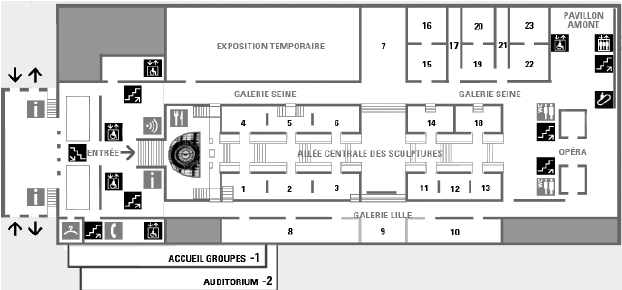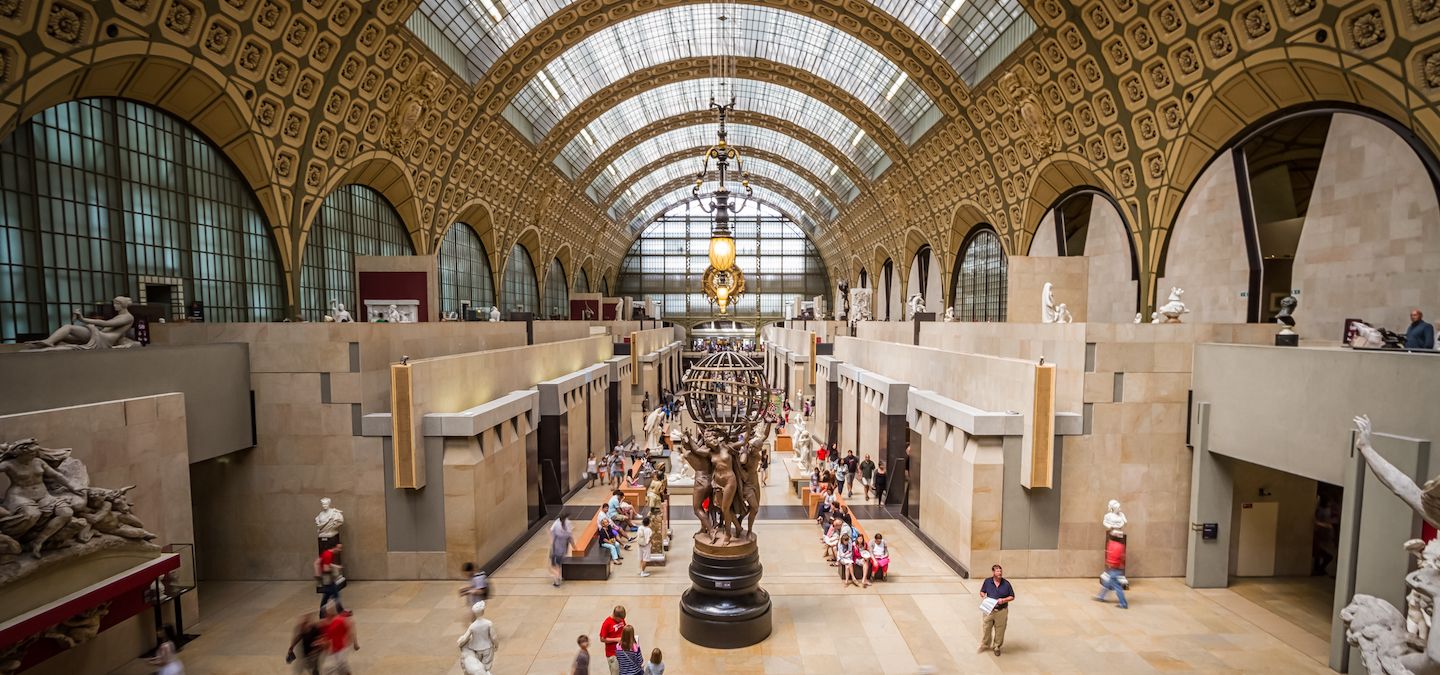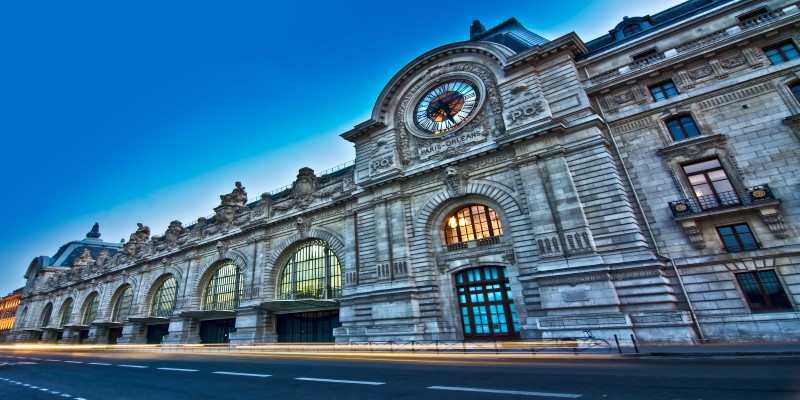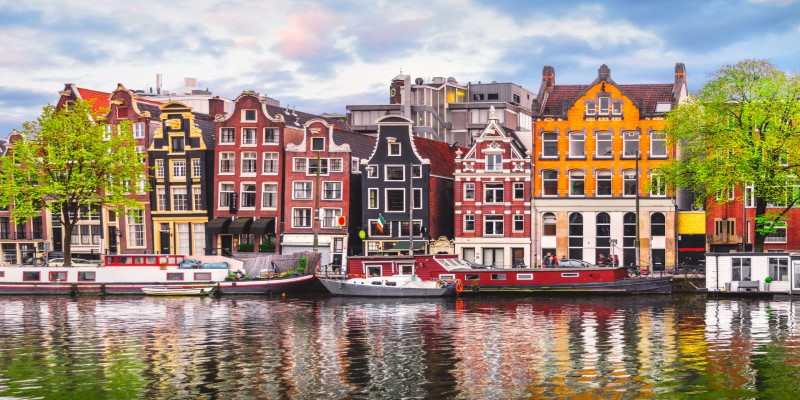If you're in Paris and find yourself near the Seine, there's a place that might not look like a museum at first glance. With its grand clock faces and glass canopy, the building once served as a railway station. Today, it holds some of the most recognizable art in the world — and not just on the walls. The Musée d’Orsay is the kind of place where the architecture, lighting, and silence are all part of the experience.
You won’t need to be an art historian to enjoy it. Even if you don’t know Monet from Manet, this museum knows how to pull you in. It’s organized, it’s thoughtful, and it flows in a way that keeps you interested without wearing you out. Whether you're there for the Impressionists or just tagging along with someone who is, this guide will help you see more than just the highlights.
A Quick Start: Understanding the Layout
The Musée d’Orsay isn’t a maze, but it helps to know where you’re going. The museum is spread over several levels, with the ground floor and top floor being the most visited. Instead of room numbers or color-coded sections, the layout follows a timeline of modern art from 1848 to 1914.

Ground floor: This is where the journey begins. You’ll find early works by artists transitioning from realism to modernism. Sculptures line the center aisle while side galleries introduce names like Courbet and Millet. You’ll notice right away that the space feels open, almost like a train platform. That’s because it was one.
Middle level (mezzanine): This area dives into decorative arts, architectural models, and lesser-known works. It’s quieter here, which makes it a good spot for a short break before heading upstairs.
Top floor: This is what most visitors come for. Van Gogh. Monet. Degas. Renoir. You’ll find them all here in rooms flooded with natural light. The huge arched windows and that iconic clock face create a backdrop that somehow makes the paintings feel even more alive.
What Not to Miss
There’s no shortage of art to admire here, but some works draw more attention than others — for good reason. You don’t need to stop at each one, but if time is limited, these are worth looking out for.
1. Van Gogh’s “Starry Night Over the Rhône”
While everyone knows The Starry Night in New York, this quieter piece lets you see Van Gogh’s softer side. The sky still swirls, but it feels calmer. You can almost hear the water lapping at the banks.
2. Manet’s “Olympia”
This painting caused a stir when it was first shown, and it still makes people pause. It’s direct. It’s bold. And it challenged the way women were portrayed in art at the time.
3. Degas’ ballerinas
Whether it's a sculpture or a pastel, there's something honest about the way Degas portrayed dancers. He didn't focus on performance but on the every day — stretching, adjusting shoes, waiting.
4. Monet’s Rouen Cathedral series
Painted at different times of day, these works show how light can turn one building into many. They’re hung side by side so you can see the changes all at once, which is what makes them so striking.
5. The clock windows
Technically, it's not art, but these windows offer one of the best views in Paris. Walk to the top floor and look out through the glass face of the clock — you'll see the Seine, Montmartre, and sometimes even the Sacré-Cœur.
Best Times and Smart Routes
The museum opens at 9:30 a.m., and that first hour is the calmest. Most people cluster around the top floor, so if you want to see it without waiting in line behind a school group, go there first. Start with the Impressionists and work your way down. If you arrive later, flip the order. Begin on the ground floor when everyone else is upstairs. You’ll walk against the crowd, which often makes for a better pace.

Weekdays tend to be quieter than weekends, but Tuesday is not an option — the museum is closed. Thursday evenings offer extended hours, and the dimmed lighting gives the galleries a very different feel. It’s less busy, too, which makes it a solid choice if you're looking to avoid the midday rush.
What You Might Not Expect
Most people come for the paintings, but the building itself is part of the story. The museum was originally the Gare d’Orsay, built in time for the 1900 World’s Fair. It had to close as a train station when platforms became too short for newer trains. For years, it sat unused — too big to tear down, too beautiful to ignore.
That history adds something to the visit. When you walk through the sculpture hall on the main floor, notice how the sunlight filters in from the glass ceiling. The building doesn’t try to hide what it was. Instead, it turns it into part of the visit.
There’s also a sense of pace that museums sometimes lose. You’re not overloaded with labels or long explanations. Most signs offer just enough to tell you what you’re looking at and let you move on when you're ready.
And if you're someone who usually skips museum cafés, this one might surprise you. The upstairs restaurant keeps the old Beaux-Arts chandeliers and ceiling frescoes. It feels like stepping into a different time — not in a forced way, just naturally grand.
Wrapping Up
You don’t have to be an art expert to enjoy the Musée d’Orsay. It’s not about memorizing dates or artist names — it’s about pausing in front of something and letting it hold your attention, even for a few seconds. That might be a ballerina mid-spin, a sunset behind a cathedral, or a quiet view through a clock window.
It's one of those places that lets you take what you want from it. If you only see half the museum, that's fine. Suppose you find a painting that pulls you in for longer than you expected, even better. The Musée d'Orsay doesn't push. It simply opens its doors and lets you look.












